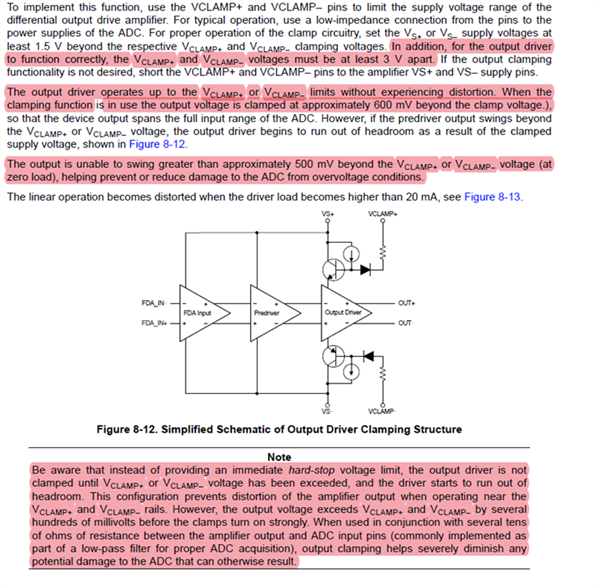Other Parts Discussed in Thread: INA851, ADS127L11, ADS127L21
Good morning,
I had problem with ADC3244 which became obvious when measuring from 16 of them at the same time. There is large mismatch between values which they return. Frontend is made from high-pass filter and INA851 differential amp connected to ADC input via resistors and low pass filter according to documentation. Clamp - pin is connected to ground, clamp + to zener diode stabilised reference. Important information is that INA is powered from symmetrical +/- 15V supply.
Recently investigation showed that when input of INA is overloaded output swings 0,5V below ground. That situation can lead to damage in practice? I tested many chips, it looks like that transients lead to damage but i wonder how to mitigate it without concerning bandwidth and signal quality. Damage mode if IC's were mostly measuring off values or lack of output clocks.






